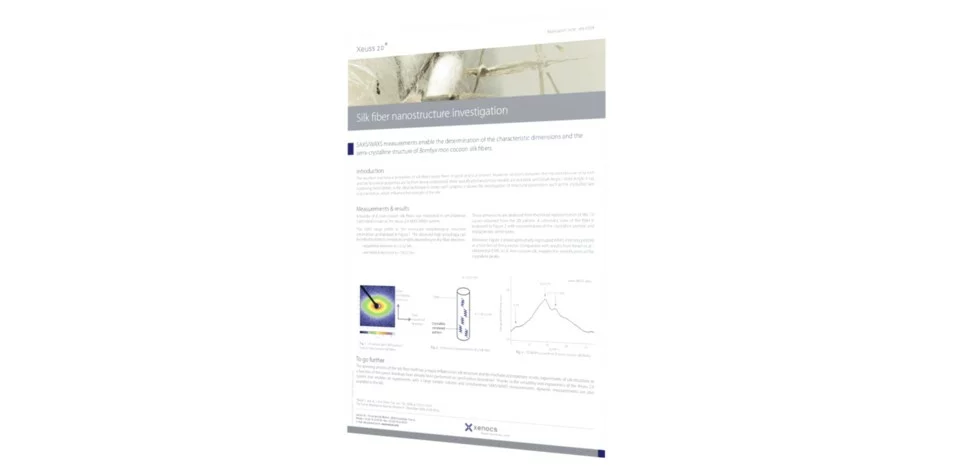SAXS/WAXS measurements enable the determination of the characteristic dimensions and the semi-crystalline structure of Bombyx mori cocoon silk fibers.
The excellent mechanical properties of silk fibers, such as their high strength and toughness, made them of great practical interest for numerous applications. The most ubiquitous domesticated silkworm, the Bombyx mori, is able to generate silk fibers from aqueous solutions under ambient conditions. The mechanical performance of these fibers is rather remarkable with a Young’s modulus of approximately 5 GPa, an ultimate tensile strength in the order of 400 MPa and tensile elongations of 15% or even more [1]. Owing to these excellent properties as well as its biocompatibility, Bombyx mori silk has found various applications in, for example, the textile industry or in biomedical engineering [2].
However, the relationship between the macromolecular structure of these silk fibers and their functional properties is far from being understood. Bombyx mori silkworm fibers have a hierarchical structure composed of fibroin coated with sericin. The fibroin fibrils are in turn composed of a network of β-crystallites connected by amorphous chains [3]. To study the structure of such hierarchical samples, small and wide angle X-ray scattering (SAXS/WAXS) is an ideal technique that allows the investigation of structural parameters such as the crystallite size and orientation, which ultimately influence the mechanical parameters of silk, for instance, its strength.
In this Application Note, we show how the characteristic dimensions and the semi-crystalline structure of Bombyx mori cocoon silk fibers are determined through simultaneous SAXS and WAXS measurements.



































